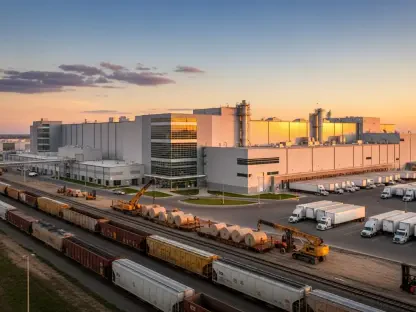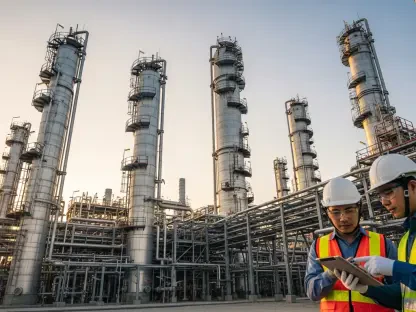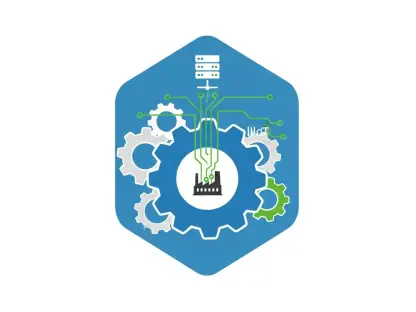The global pharmaceutical supply chain is undergoing a profound transformation, with China positioning itself as a central force that could redefine access to essential medicines worldwide, reshaping health security and international power dynamics. Over the past decade, the People’s Republic of China (PRC) has strategically maneuvered to control key segments of this vital industry, particularly in the production of Active Pharmaceutical Ingredients (APIs), the core components of drugs. This shift is not merely an economic trend but a calculated effort driven by robust government policies, massive corporate consolidations, and significant foreign investments. The implications ripple far beyond borders, touching on issues of health security and international power dynamics. For nations like the United States, which depend heavily on Chinese manufacturing for critical medications, this growing dominance raises urgent questions about vulnerability and resilience in times of crisis. The COVID-19 pandemic starkly revealed these risks, as drug shortages crippled healthcare systems and exposed the fragility of over-reliance on a single source. This article delves into the intricate mechanisms fueling China’s ascent in the pharmaceutical sector, examining the role of state intervention, industry strategies, and global partnerships. It also sheds light on the hidden dangers of supply chain dependencies and explores the broader geopolitical stakes at play. As China’s influence expands, understanding these dynamics becomes essential for policymakers and industry leaders aiming to safeguard global health.
State-Driven Strategies Fueling Growth
China’s remarkable rise in the pharmaceutical industry owes much to the unwavering support of its government, which has meticulously crafted policies to propel the sector forward. Since at least a decade ago, initiatives such as the National Medical and Health Service System Planning Outline have laid a foundation for ambitious growth, prioritizing both production capacity and technological advancement. More recent efforts, including plans rolled out by the State Council, focus on streamlining regulatory processes and drastically reducing the time required for drug approvals. These measures are not mere paperwork; they create tangible ecosystems for success, particularly through the establishment of pilot zones in key coastal regions like Jiangsu and Shanghai. These areas, responsible for a substantial share of API output, serve as incubators for innovation and regulatory experimentation, positioning China as a formidable competitor on the global stage. The government’s vision extends beyond simply increasing volume—it aims to transform the industry into a hub of cutting-edge research, integrating technologies like artificial intelligence to redefine medical innovation.
Equally significant is the strategic intent behind these policies, which balance immediate economic gains with long-term global influence. By fostering environments where pharmaceutical companies can thrive, the PRC ensures that domestic firms are not just suppliers but also leaders in the field. This dual focus is evident in efforts to protect intellectual property and harness big data, moves that challenge the traditional narrative of China as merely a low-cost manufacturer. The impact of such state-driven strategies is profound, as they attract both local talent and international interest, further solidifying the country’s grip on critical supply chains. While some nations struggle with fragmented health policies, China’s cohesive approach offers a blueprint for industrial dominance, raising questions about how other countries can respond to this orchestrated ascent. The groundwork laid by these initiatives suggests a future where China’s role in global health becomes even more indispensable.
Corporate Powerhouses and Strategic Mergers
Within China’s borders, the pharmaceutical landscape is being reshaped by aggressive corporate consolidation, a trend that amplifies the nation’s global reach. A prime example is the acquisition of LaNova, a biomedical technology firm, by Sino Biopharm, one of the country’s leading pharmaceutical conglomerates. This transaction mirrors a wider pattern where industry giants like Jiangsu Hengrui Medicine are absorbing smaller, innovative entities to bolster their portfolios and market presence. Such mergers are not merely about expanding scale; they enhance technological capabilities and secure strategic footholds in international supply chains. LaNova’s prior collaborations with Western heavyweights like Merck, involving deals worth billions, demonstrate how these consolidations integrate China deeper into global networks, often at the expense of diversifying supply sources for other nations.
Beyond individual deals, this wave of corporate activity reflects a deliberate strategy to position Chinese firms as indispensable players in drug development and production. By acquiring companies with established ties to foreign markets, these conglomerates gain access to advanced research and lucrative commercialization opportunities, effectively bridging the gap between domestic growth and international influence. The ripple effects are felt worldwide, as such consolidations reduce the number of independent players in the market, concentrating power in the hands of a few Chinese entities. This trend poses challenges for countries seeking to maintain autonomy over their pharmaceutical needs, as reliance on these giants grows. The pace of these mergers signals an intent to not just compete but to dominate, prompting a reevaluation of how global partnerships and dependencies are structured in this critical sector.
Foreign Capital as a Catalyst for Expansion
Foreign investment stands as a cornerstone of China’s pharmaceutical surge, providing the financial muscle needed to scale operations and innovate. High-profile engagements, such as meetings between President Xi Jinping and executives from leading global firms like AstraZeneca and Pfizer, underscore the PRC’s commitment to embedding itself within international supply chains. Billions of dollars have flowed in from companies such as Roche and Sanofi, funding state-of-the-art facilities and extensive research initiatives across China. These investments are not altruistic; they grant Western corporations access to a vast consumer base and cost-effective labor, while simultaneously deepening global dependence on Chinese infrastructure. This symbiotic relationship, often supported by favorable treatment from Beijing even in contentious legal situations, highlights a calculated effort to prioritize foreign partnerships as a means of building domestic strength.
The scale of this financial influx reveals a nuanced dynamic where mutual benefits mask underlying risks. While foreign firms gain entry into a booming market, their investments fortify China’s position as a critical node in the production of essential drugs, raising concerns about over-reliance. The strategic courting of international capital also allows Chinese companies to tap into global expertise, accelerating their transition from manufacturers to innovators. This trend is particularly evident in the coastal hubs where much of this investment is concentrated, creating clusters of advanced pharmaceutical activity that rival traditional Western strongholds. As these partnerships deepen, the balance of power in the industry tilts further toward China, prompting nations to reconsider the long-term implications of such intertwined economic ties. The question remains whether this influx of capital will continue to be a win-win or evolve into a source of leverage for the PRC.
Vulnerabilities in Global Supply Chains
At the heart of China’s pharmaceutical dominance lies its control over APIs, the essential building blocks of medications, which poses significant risks to global health security. The PRC is the sole manufacturer of APIs for several critical drugs identified as essential by the United States, creating a direct dependency that is hard to untangle. Estimates of U.S. reliance on Chinese APIs vary widely, but indirect exposure through intermediaries like India, which sources a substantial portion of its APIs from China, compounds the issue. The opacity of global supply chains further obscures the true extent of this reliance, as secondary and tertiary inputs often trace back to Chinese origins without clear visibility. This lack of transparency makes it nearly impossible to predict or mitigate disruptions, leaving healthcare systems vulnerable to sudden shortages.
The COVID-19 pandemic served as a grim wake-up call, exposing the fragility of these dependencies with over 100 drug shortages reported in the U.S. alone during the crisis. Even now, critical shortages persist, disrupting patient care and highlighting the urgent need for supply chain resilience. The inability to trace drug components back to their source exacerbates these risks, as alternative suppliers cannot be easily identified or mobilized in times of need. China’s increasing production capacity—evidenced by a 70 percent rise in API output over recent years—only tightens its grip on this vital sector, amplifying concerns about potential supply interruptions. Addressing these vulnerabilities requires not just awareness but concerted action to diversify sourcing and enhance transparency, a challenge that remains unmet for many nations grappling with the consequences of concentrated supply chains.
Geopolitical Stakes and Future Concerns
China’s expanding influence in pharmaceuticals carries profound geopolitical implications, echoing its near-total control over rare earth minerals like gallium, where it holds 98 percent of the global supply. Export restrictions on such materials have already been deployed as tools of international pressure, offering a troubling precedent for how pharmaceutical dominance could be leveraged. With API production soaring in recent years, the PRC’s trajectory suggests a future where access to life-saving drugs might become a bargaining chip in diplomatic or economic disputes. This potential for coercion is not abstract; it aligns with broader strategic initiatives that explicitly target dominance in critical industries, raising alarms about the intersection of health and global power dynamics.
The parallels with rare earths underscore a pattern of using supply chain control to exert influence, a tactic that could reshape international health policies if applied to pharmaceuticals. While China does not yet hold complete sway over the sector, its rapid progress and the opacity of global dependencies signal a shift that could catch many nations unprepared. The U.S. and other countries face the daunting task of balancing economic interdependence with the need for self-sufficiency in critical areas like drug manufacturing. Recent investigations into API supply chains by governmental bodies indicate growing awareness, but actionable solutions remain elusive. As this landscape evolves, the stakes extend beyond economics to the very foundation of global health security, prompting a critical examination of how to navigate an increasingly interconnected yet precarious world.
Reflecting on Strategic Responses
Looking back, China’s calculated ascent in the pharmaceutical industry emerged as a defining challenge for global health systems, driven by a potent mix of government policy, corporate strategy, and foreign investment. The nation’s grip on API production and its integration into international supply chains had already reshaped access to essential medicines, often leaving other countries scrambling during crises like the pandemic. The geopolitical undertones of this dominance, mirrored in past export controls on strategic resources, hinted at a future where health could become a lever of influence. Unlike earlier discussions of economic trends, this reflection emphasized the urgency of response over mere recognition of the issue. Nations had to prioritize transparency in tracking drug origins, a step that proved vital in uncovering hidden dependencies. Diversifying sourcing through incentives for domestic manufacturing also stood out as a necessary countermeasure to reduce reliance on a single supplier. International cooperation, often overlooked in favor of unilateral action, became a cornerstone for mitigating risks, as shared resources and knowledge could bolster resilience. Moving forward, the focus shifted to actionable strategies—investing in alternative production hubs and fostering policy frameworks that encouraged supply chain redundancy. These steps, though complex, offered a path to safeguard patient care against the backdrop of China’s enduring influence, ensuring that lessons from past vulnerabilities informed a more secure future.









